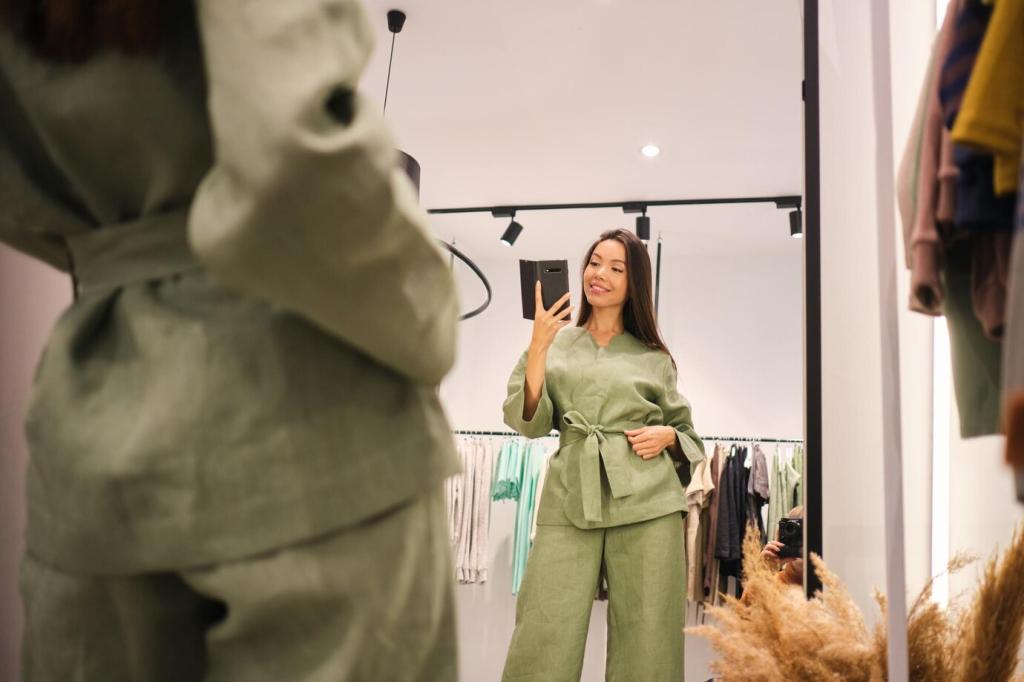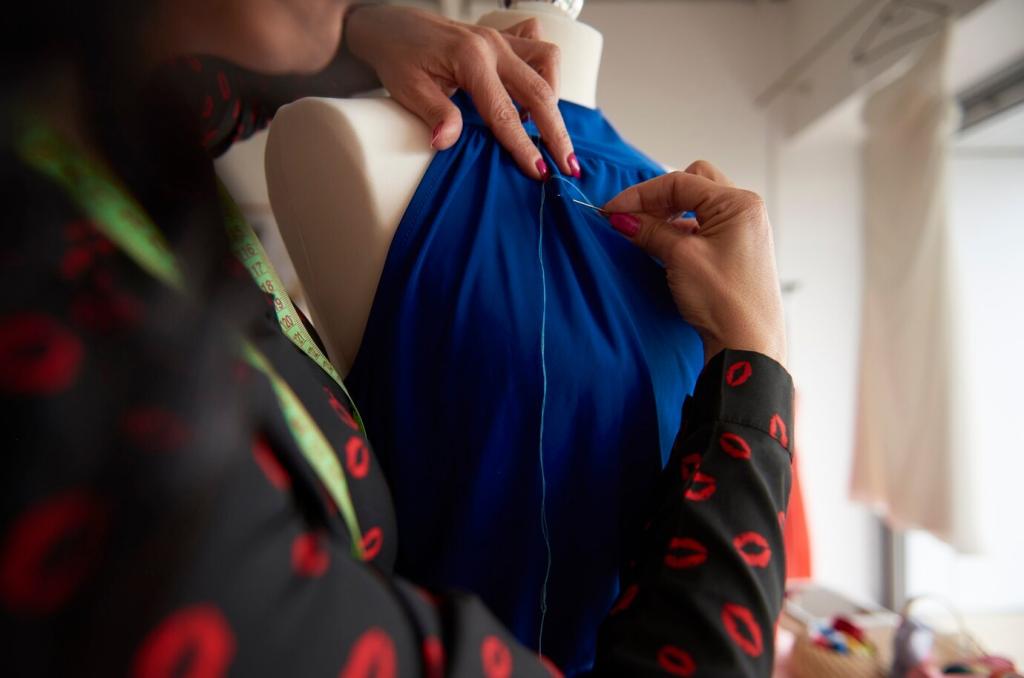Circular Fashion in Action: Repair, Resale, and Reimagination
Mending bars, patch kits, and free tutorials turn small rips into stories, not landfill. Washing cold, air drying, and using microplastic filters dramatically extend life while shrinking impact. Share your favorite repair success and subscribe for monthly care challenges that save garments and money.
Circular Fashion in Action: Repair, Resale, and Reimagination
Brand-run resale, authenticated trade-ins, and community marketplaces keep quality pieces in circulation. Take-back programs turn worn-out items into new yarns or insulation. When brands design for second ownership, sizing consistency and robust quality control ensure garments truly live multiple meaningful lives.





